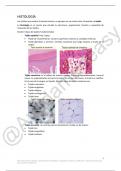Samenvatting
Summary Marketing Communication 2015/2016
- Vak
- Instelling
Summary of the whole course of Marketing Communication in 2015/2016. You do not need to buy an expensive book. Just go through this summary and you will be prepared for the exam :)
[Meer zien]












